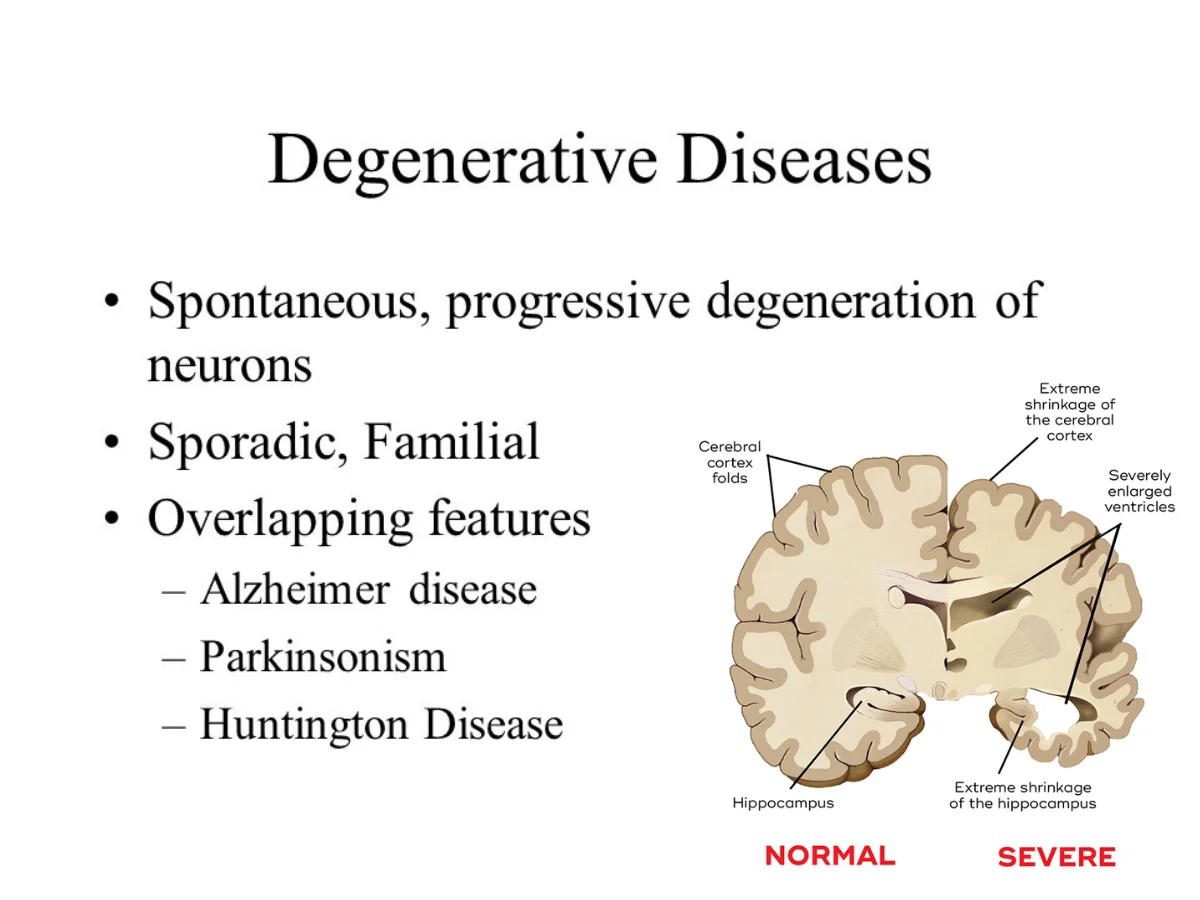In the realm of medical terminology, the terms “progressive” and “degenerative” are frequently used when describing various diseases and conditions. While these terms may sound similar, they hold distinct meanings that significantly impact how healthcare professionals diagnose, treat, and manage these conditions. In this article, we’ll delve into the difference between progressive and degenerative diseases, shedding light on their characteristics, causes, and potential treatments.
1. Introduction: Defining Progressive and Degenerative Diseases
Before we explore the disparities between progressive and degenerative diseases, let’s establish a fundamental understanding of these terms.
2. Understanding Progressive Diseases
2.1. Characteristics of Progressive Diseases
Progressive diseases are medical conditions that worsen over time. They typically exhibit a pattern of gradual deterioration, often with irreversible changes. These diseases may advance slowly or rapidly, but their hallmark is the continuous decline in health and function.
2.2. Common Examples of Progressive Diseases
Progressive diseases encompass a wide range of conditions. Some well-known examples include:
- Alzheimer’s disease
- Amyotrophic lateral sclerosis (ALS)
- Multiple sclerosis (MS)
- Parkinson’s disease
- HIV/AIDS (in advanced stages)
3. Delving into Degenerative Diseases
3.1. Characteristics of Degenerative Diseases
Degenerative diseases, on the other hand, primarily involve the breakdown or degeneration of bodily tissues or organs. While they can also lead to a decline in health and function, they don’t necessarily follow a predictable progression. Instead, degenerative diseases often result from wear and tear on the body or genetic factors.
3.2. Common Examples of Degenerative Diseases
Some well-known degenerative diseases include:
- Osteoarthritis
- Degenerative disc disease
- Age-related macular degeneration (AMD)
- Huntington’s disease
- Chronic obstructive pulmonary disease (COPD)
4. What Sets Them Apart?
4.1. Key Differences in Progression
The key distinction between progressive and degenerative diseases lies in their progression. Progressive diseases consistently worsen, while degenerative diseases may not necessarily follow a linear path of deterioration.
4.2. Causes and Mechanisms
Progressive diseases often involve factors like the accumulation of abnormal proteins or damage to nerve cells. In contrast, degenerative diseases are frequently associated with aging, genetics, or the gradual breakdown of tissues.
5. Diagnosis and Treatment
5.1. Diagnostic Approaches
Diagnosing both progressive and degenerative diseases may involve medical history assessment, physical examinations, imaging tests, and laboratory analyses. Specific diagnostic criteria vary based on the disease in question.
5.2. Treatment Strategies
Treatment approaches depend on the nature of the disease. Progressive diseases may have management strategies aimed at slowing down progression and improving symptoms. Degenerative diseases often focus on symptom management and preserving function.
6. Living with Progressive and Degenerative Diseases
6.1. Quality of Life Considerations
Both types of diseases can have a profound impact on a person’s quality of life. It’s essential to consider physical, emotional, and social aspects when providing care and support.
6.2. Support and Resources
Patients and their families can benefit from support groups, counseling, and access to resources that cater to the unique challenges posed by these diseases.
7. Conclusion
In conclusion, understanding the difference between progressive and degenerative diseases is crucial for both healthcare professionals and individuals facing these conditions. While progressive diseases consistently worsen, degenerative diseases may not exhibit a linear progression. Recognizing these disparities helps tailor diagnosis, treatment, and support for improved patient outcomes.
8. FAQs
1. What defines a progressive disease?
Progressive diseases are characterized by a continuous decline in health and function over time, often with irreversible changes.
2. Can degenerative diseases ever become progressive?
While degenerative diseases primarily involve tissue breakdown, they can sometimes exhibit progressive features, particularly in advanced stages.
3. Is there a cure for progressive diseases?
In many cases, there is no cure for progressive diseases, but treatment can help manage symptoms and slow down their progression.
4. Do degenerative diseases always come with aging?
While many degenerative diseases are associated with aging, genetic factors, and other influences can contribute to their development in younger individuals.
5. Where can I find support for living with these diseases?
Support groups, healthcare providers, and nonprofit organizations often provide valuable resources and assistance for individuals living with progressive and degenerative diseases.
Read More: https://www.rozyjos.com/
More Related:
Exploring Alternatives to Progressive Lenses: A Comprehensive Guide
Unveiling the Exclusive Benefits of Progressive Emerald Level Membership
Who is the Major Shareholder of Progressive Insurance?
Drop Set vs. Progressive Overload: Which is Better for Muscle Growth?
Exploring the Most Impressive Achievements of Progressive Reformers

